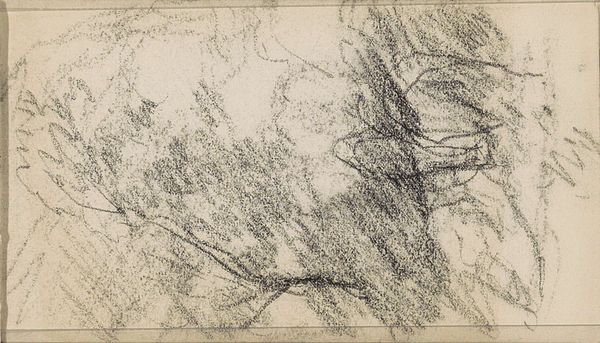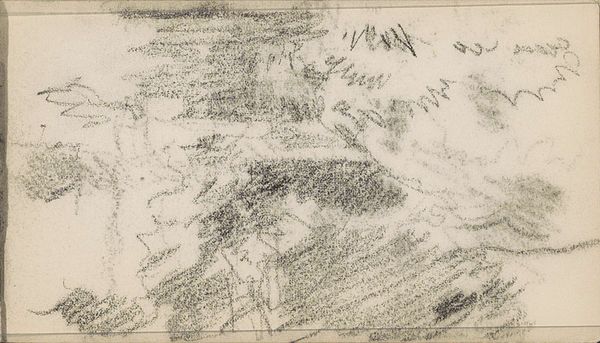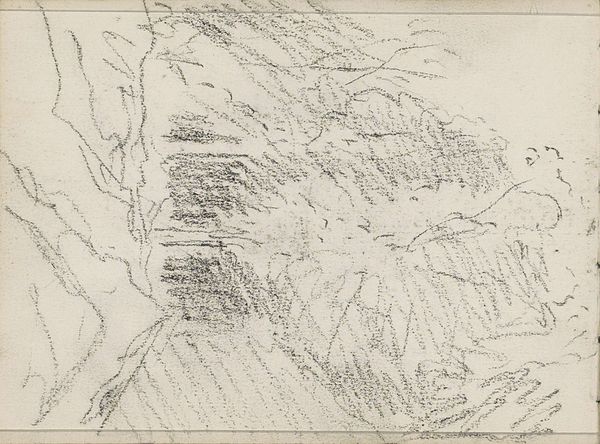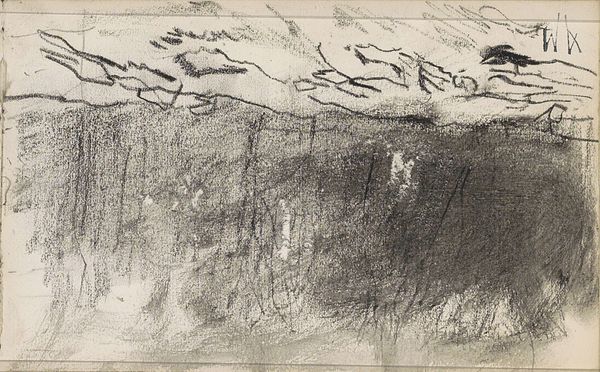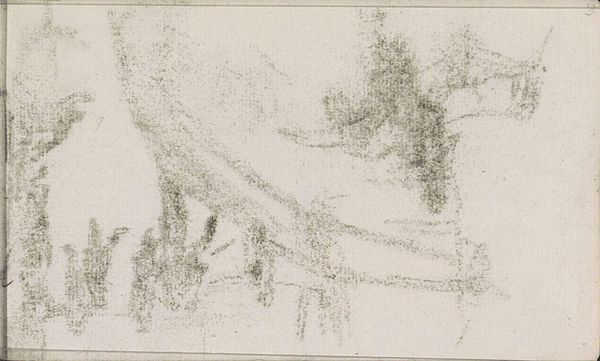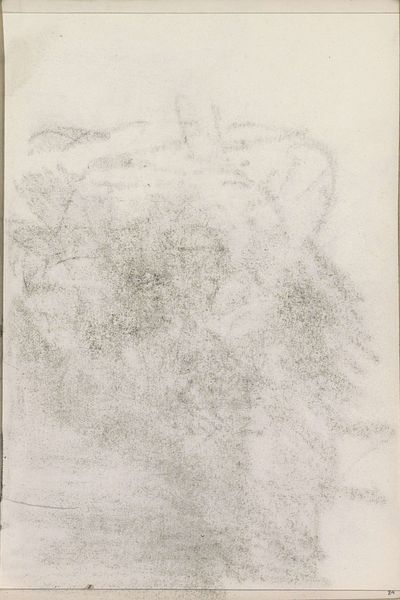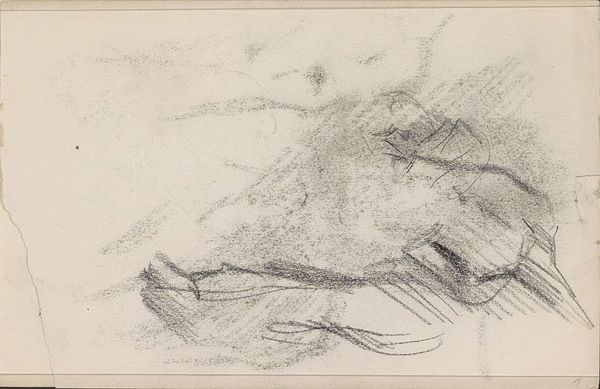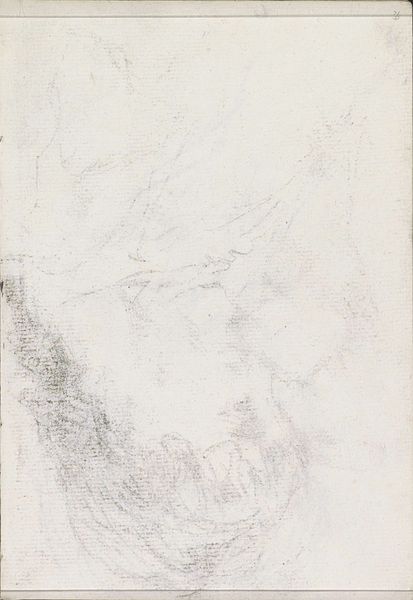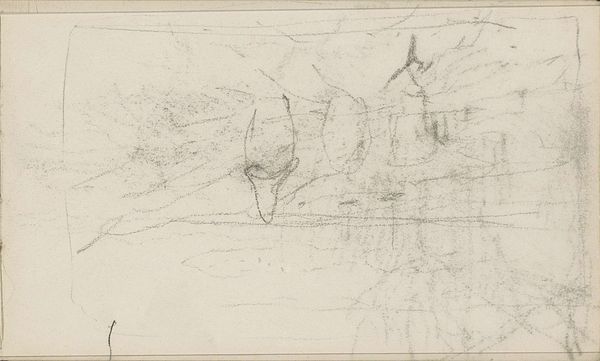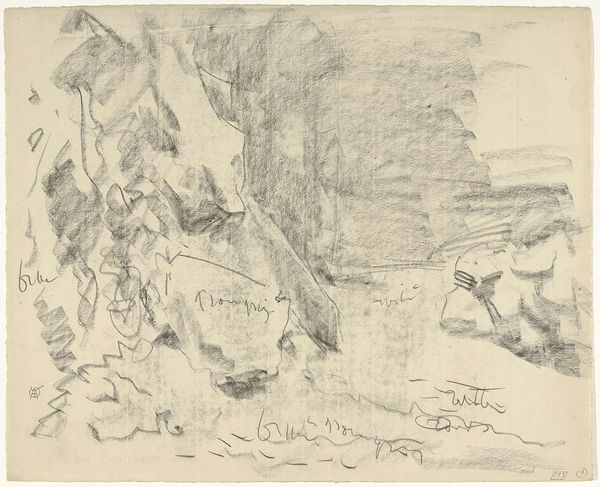
Copyright: Rijks Museum: Open Domain
Editor: So, here we have Isaac Israels' "Abklatsch van de krijttekening op blad 2 verso," a pencil and graphite drawing done sometime between 1875 and 1934. It looks like a ghostly, almost abstract landscape to me. What do you see in this piece? Curator: I see a deliberate engagement with the fleeting nature of observation and the politics inherent in artistic representation. The “Abklatsch,” or offset, suggests a secondary image, a copy of a copy. How does this relate to Israels' position in the art world, and what does it say about the value we place on originality? Is he commenting on the institutional reproduction of art? Editor: That's a really interesting point! I hadn't considered the implications of it being an offset. Does the impressionistic style factor into this critique as well? Curator: Absolutely. Impressionism, at its core, challenged the academic art of its time by prioritizing subjective experience over objective representation. Israels' loose lines and vague forms actively engage the viewer. How does the social context of impressionism, as a movement embracing modernity and challenging tradition, inform your understanding of this drawing? Editor: Well, it feels like he's using the landscape not so much to depict it faithfully but to capture a feeling, almost like he is reacting against the rigid academic painting styles that came before. But also because drawing is so portable it means he could move quickly through the city and depict things quickly. Curator: Precisely. And considering Israels' depiction of modern urban life, do you think this landscape represents an escape or perhaps a commentary on the changing relationship between urban dwellers and the natural world? What function might nature hold for people who dwell in cities? Editor: Hmm, perhaps a reminder of something lost, or maybe just a different space for different kinds of social interactions. Curator: It highlights the intertwined nature of art, society, and perception, right? The work gives tangible insight into how social changes in the 19th Century might impact not only what artists depicted, but the modes of doing so. Editor: Definitely! It's much more than just a sketch; it is deeply entwined with society. Curator: I’ve never considered it in that context. Always something new to learn.
Comments
No comments
Be the first to comment and join the conversation on the ultimate creative platform.
